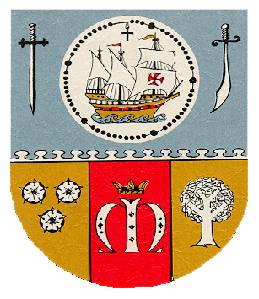The Story of the Title of Our Lady of Victory
During the pontificate of Pope Pius V, 1566-72, the Ottoman Turks became a serious threat to Christian nations. They controlled maritime power in the Mediterrranean, and regularly raided the coast cities of Italy. Venice, the most vulnerable, tried to maintain a strategic neutrality to protect her trade with the East. When Sultan Selim II demanded the surrender of Cyprus, the Venetians appealed to the Pope. Pius V proposed the Holy League of Christian powers, the crusade against the Turks. He succeeded in organizing a fleet at Messina under command of Don Juan of Austria. In 1571 this fleet comprised 206 galley ships and 80.000 soldiers from Venice, Naples, Genoa, Spain and Malta. The Turks had superior forces – 230 galleys and 120,000 soldiers.
Don Juan aboard the flagship, Reale, sailed down the Greek coast on the morning of October 7th 1571 and spied the Turkish fleet in the Gulf of Lepanto (Corinth). Admiral Ali Pasha aboard his flagship, Sultana, took the lead. Christian and Turkish fleets engaged in battle. By day’s end the Sultana was captured, Ali Pasha was slain, the Turks were routed, and 12,000 Christians were released from slavery.
On the very same day, October 7th, the Rosary Confraternity of Rome met in the Dominican Church to pray for the victory of the Christian forces. When the news of victory did reach Rome, it was attributed to the intercession of Our Lady. In commemoration of Lepanto, Pope Pius V established a feast in honor of Our Lady of Victory. Later Gregory XIII changed it to the feast of the Most Holy Rosary, celebrated on October 7th.
(Taken from the 60th Anniversary Journal of OLV Parish – 1981)
